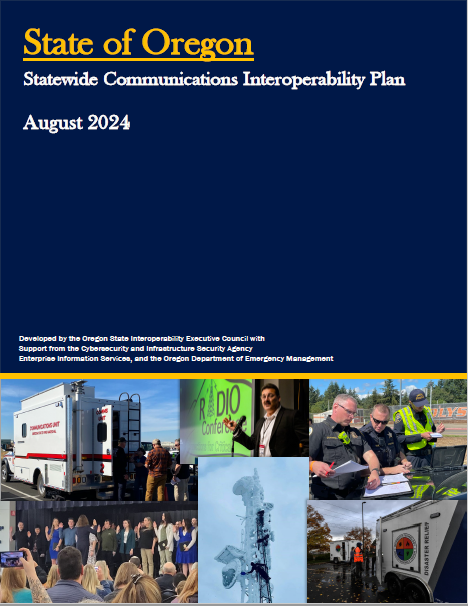
Oregon’s
Statewide Communication Interoperability Plan (SCIP) is a locally-driven, multi-jurisdictional, and multi-disciplinary statewide plan to enhance emergency communications and interoperability throughout Oregon. In order to be eligible for grant funding made available by the U.S. Dept. of Homeland Security, every state and territory must have a SCIP. SCIPs are also required by many other federal grant programs and funding requests are usually tied to compliance with a state’s SCIP. More information on the importance of a state’s SCIP from the federal perspective can be found
here.
Oregon’s SCIP is developed by the SIEC with stakeholder input drawn from a vast variety of sources. The plan creates a single resource for all agencies and organizations that operate within Oregon to reference and creates a unified approach for enhancing interoperable communications for public safety and officials at all levels of government. The purpose of our SCIP is to define the current and future direction for interoperable and emergency communications within the state and to meet the requirements of ORS 403.455.
The SCIP is a comprehensive plan which:
- Defines the current and future interoperable and emergency communications environment.
- Identifies strategic goals and tactical objectives for enhancing emergency communications and increasing interoperability. (including owners and completion timeframes)
- Describes mechanisms to measure achievements.
- Outlines the process by which the state will record progress and challenges each year.
The SCIP structure is designed to highlight opportunities and challenges facing the state as well as define Oregon's strategic direction and our priorities for the next four years. The document focuses on an alignment of all emergency communications (voice and data) in the state and includes all forms of related technology. The SCIP is a living document and members of the SIEC frequently review the SCIP and report out on implementation progress against specific objectives during each quarterly meeting of the Council.